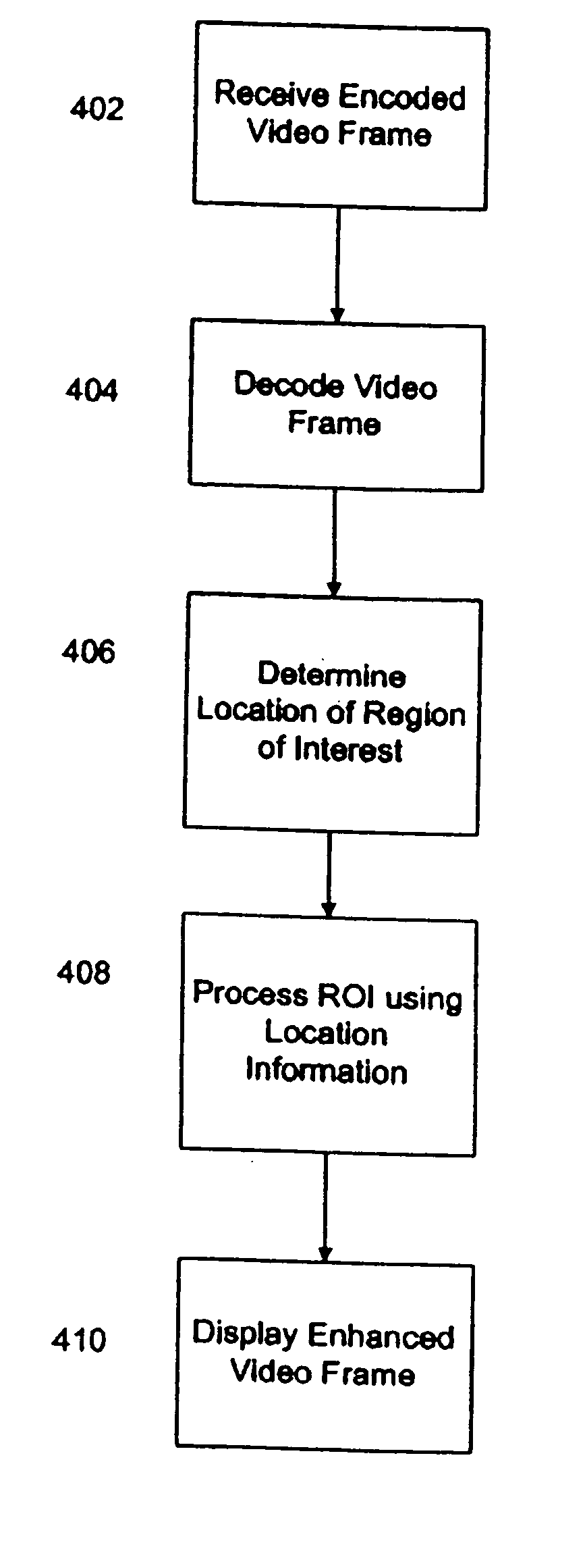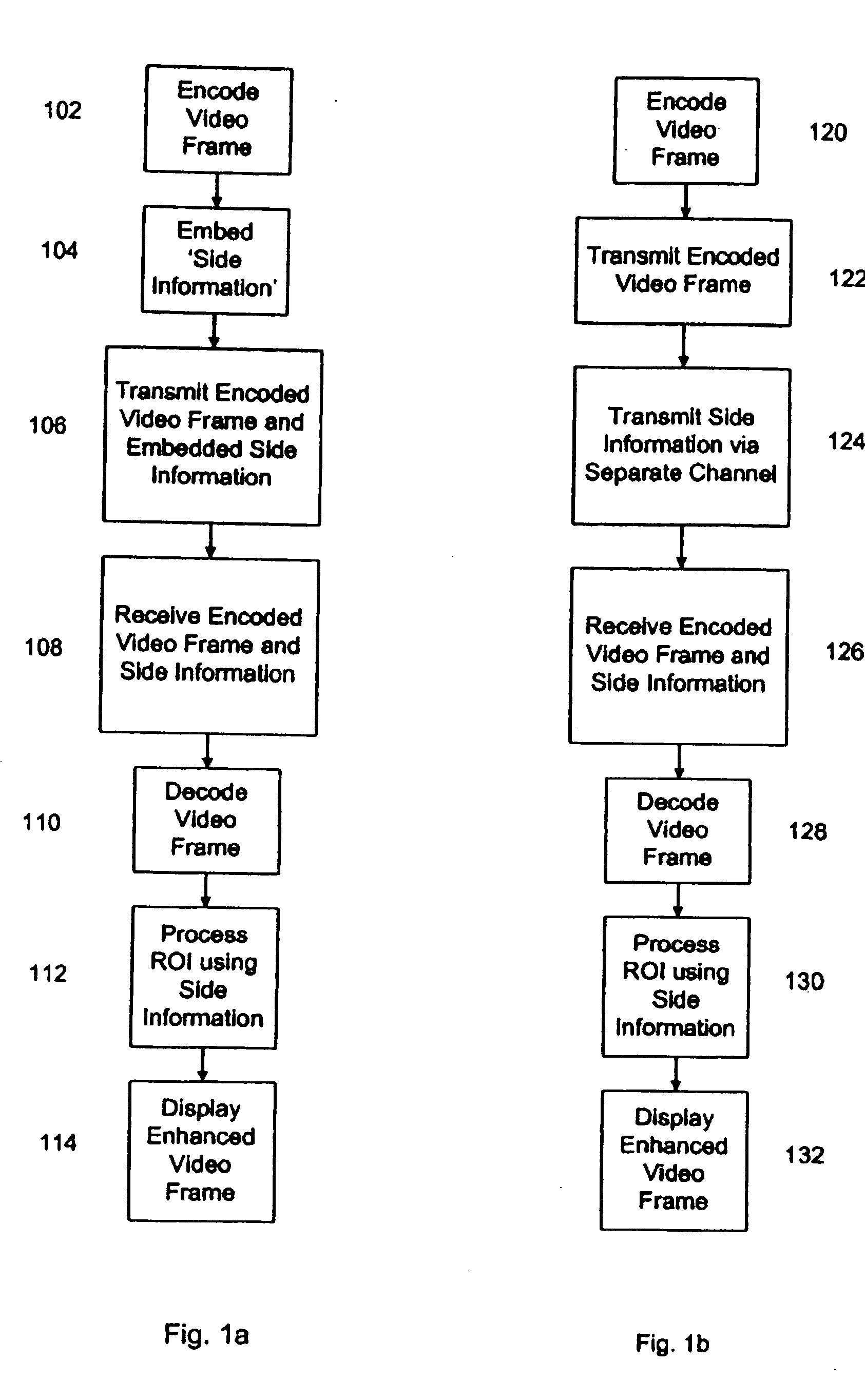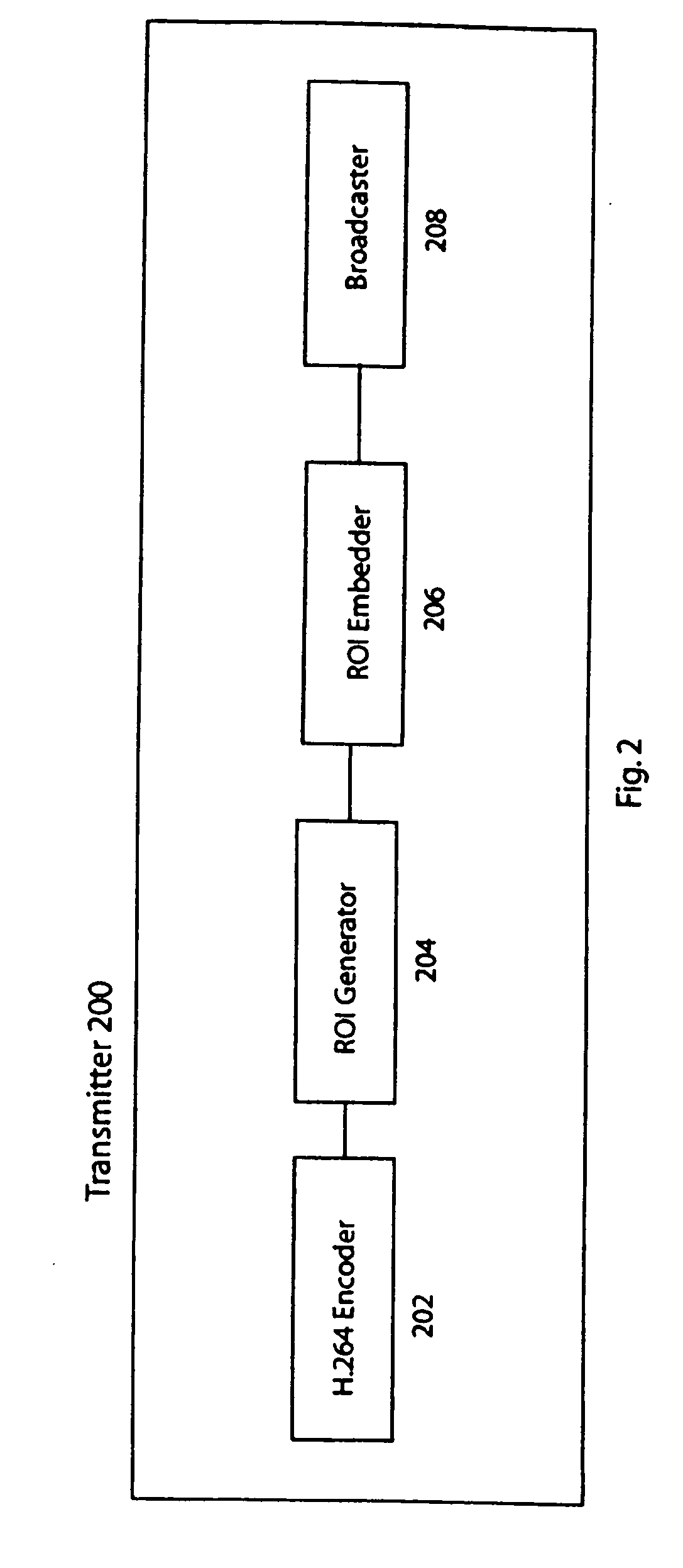Selective post-processing of compressed digital video
a compression and digital video technology, applied in the field of digital data transmission and processing, can solve the problems of poor image quality and shortening the frame, and achieve the effects of improving the perceived quality of digital imagery, enhancing the perceived quality of the image, and improving the perceived quality of video frame data
- Summary
- Abstract
- Description
- Claims
- Application Information
AI Technical Summary
Benefits of technology
Problems solved by technology
Method used
Image
Examples
Embodiment Construction
[0017] The embodiments disclosed below are not intended to be exhaustive or limit the invention to the precise forms disclosed in the following detailed description. Rather, the embodiments are chosen and described so that others skilled in the art may utilize their teachings.
[0018] For the purposes of the present invention, certain terms shall be interpreted accordance with the following definitions.
[0019]“Bandwidth” generally refers to amount of data that can be transmitted in a fixed amount of time. For digital devices, the bandwidth is usually expressed in bits per second, (bps) or bytes per second. For analog devices, the bandwidth is expressed in cycles per second, or Hertz (Hz).
[0020]“Channel” hereinafter refers to the path along which a communications signal is transmitted.
[0021]“Codec” or “Coder / Decoder” generally refers to a device that compresses or decompresses a digital video or audio signal.
[0022]“Compression” or “Encoding” generally refers to the process of reduc...
PUM
 Login to View More
Login to View More Abstract
Description
Claims
Application Information
 Login to View More
Login to View More - R&D
- Intellectual Property
- Life Sciences
- Materials
- Tech Scout
- Unparalleled Data Quality
- Higher Quality Content
- 60% Fewer Hallucinations
Browse by: Latest US Patents, China's latest patents, Technical Efficacy Thesaurus, Application Domain, Technology Topic, Popular Technical Reports.
© 2025 PatSnap. All rights reserved.Legal|Privacy policy|Modern Slavery Act Transparency Statement|Sitemap|About US| Contact US: help@patsnap.com



